#Petrie Museum of Egyptian Archaeology
Text

Ancient Egyptian jar (calcite, filled with cedar resin), bearing the cartouche of the 18th Dynasty female pharaoh Hatshepsut (r. ca. 1479-1458 BCE). Found near Hatshepsut's mortuary temple at Deir el-Bahari; now in the Petrie Museum of Egyptian Archaeology, London. Photo credit: Osama Shukir Muhammed Amin FRCP/Wikimedia Commons.
#art#art history#ancient art#Egypt#Ancient Egypt#Egyptian art#Ancient Egyptian art#cartouche#Hatshepsut#18th Dynasty#New Kingdom#Deir el-Bahari#Petrie Museum of Egyptian Archaeology
88 notes
·
View notes
Text
The Petrie Museum of Egyptian Archaeology
Alice Stevenson (Eds.)
Score:10.00|3 votes
Book Details:
Global
CategoryYear:2015
Publisher:UCL Press
Pages:63 pages
Language:english
Since:03/02/2017
Size:20.62 MB
License:CC-BY-NC-ND
Content:
There are an infnite number of ways to know a collection and no one person can ever exhaust all of the possibilities. The frst aim of this book is, therefore, to bring together only a very small series of vantage points chosen by several individuals in order to introduce the range and scope of University College London’s Petrie Museum of Egyptian Archaeology. Together, we can but scratch the surface of the array of objects held here and much more remains to be explored. And anyone is welcome to do so. The entire collection is available to view online and each object is identifed with a unique number, prefaced with the letters ‘UC’ (which stand for University College), as are the objects in this publication.
The second aim of this book is to introduce just a few of the characters whose lives became caught up in the discovery, care and rediscovery of the collection. These are stories not just of famous archaeologists, but also of the unsung multitudes upon whose labour this Museum is built. It is therefore to the Egyptian workforce and all the staff and volunteers of the Petrie Museum (past and present) that this small volume is dedicated.
0 notes
Text
Ancient Egyptians may have used branding irons on human slaves
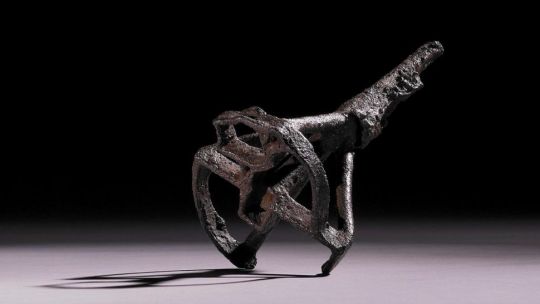
Small branding irons from ancient Egypt were likely used to mark the skin of human slaves, a new study suggests.
Several ancient texts and illustrations, as well as 10 branding irons dating to 3,000 years ago, suggest that ancient Egyptians branded slaves. These branding irons, actually made of bronze, are now in the collections of the British Museum and the Petrie Museum of Egyptian Archaeology at University College London.
The branding irons are thought to date roughly to Egypt's 19th dynasty, from around 1292 B.C. until the 25th dynasty, which ended in 656 B.C., according to a study published Oct. 15 in The Journal of Egyptian Archaeology. Read more.
260 notes
·
View notes
Text
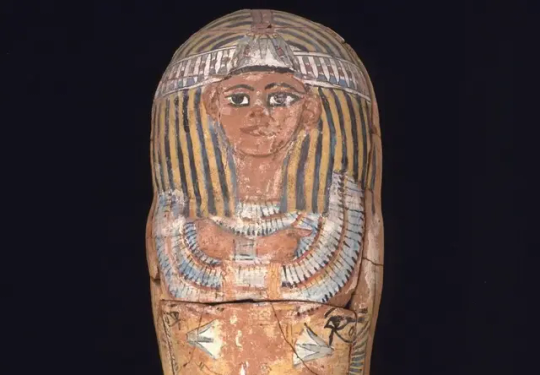

MFA Boston Returns Stolen Egyptian Child Sarcophagus to Sweden
The coffin was taken from the collection of a museum in Uppsala.
A coffin that was used to bury an Egyptian child named Paneferneb between about 1295 and 1186 B.C.E., which has been in the hands of the Museum of Fine Arts Boston since 1985, has been returned to a museum in Sweden after MFA staff discovered that the piece was stolen from the Gustavianum, Uppsala University Museum, around 1970.
The British School of Archaeology in Egypt unearthed the coffin in 1920 at Gurob, Egypt. Overseeing the dig was Flinders Petrie, who, with his wife, Hilda Urlin, excavated numerous important archaeological sites. Among his most significant finds was the Merneptah Stele in 1896; he also discovered the Proto-Sinaitic script, the ancestor of almost all alphabetic scripts, in 1905.
At the time, the Egyptian government had put in place a system of “partage,” or a division of finds, whereby it distributed the results of archaeological excavations between Egypt and the foreign parties sponsoring the digs. As part of that system, the coffin went in 1922 to Uppsala University’s Victoria Museum of Egyptian Antiquities, as it was then called. But the sarcophagus, made of pottery and measuring about 43 inches in length, went missing by at least 1970.
The coffin resurfaced in 1985, when the MFA bought it from one Olof S. Liden, who claimed to represent the artist Eric Ståhl. He presented a forged letter in which Ståhl supposedly recounted having excavated the coffin at Amada, Egypt, in 1937. Liden also presented falsified documents authenticating the coffin, purportedly from experts in Sweden. Ståhl, noted the museum in its announcement of the return of the coffin, “is not known to have participated in any excavation in Egypt.”



Curators at the MFA first smelled a rat upon finding a photograph of the coffin in the process of excavation in the 2008 book Unseen Images: Archive Photographs in the Petrie Museum, which noted that it went to Uppsala. When they noted the discrepancy, they contacted the staff at the Gustavianum, and the process of returning the piece began; the museum’s website stated that it was deaccessioned in October.
“It has been wonderful working with our colleagues in Uppsala on this matter, and it is always gratifying to see a work of art return to its rightful owner,” said Victoria Reed, senior curator of provenance at the MFA. “In this case, we were fortunate to have an excavation photograph showing where and when the coffin was found, so that we could begin to correct the record. Anytime we deaccession and restitute a work of art from the museum, it serves as a good reminder that we need to exercise as much diligence as possible as we build the collection.”
The MFA Boston’s department of the art of ancient Egypt, Nubia, and the Near East includes some 65,000 artifacts, including sculpture, jewelry, coffins, mummies, mosaics, and more, placing it among the world’s largest collections of such items, along with institutions like the Grand Egyptian Museum in Giza and London’s British Museum. The Gustavianum houses a collection of about 5,000 examples.
By Brian Boucher.

#MFA Boston Returns Stolen Egyptian Child Sarcophagus to Sweden#Egyptian child named Paneferneb#sarcophagus#ancient artifacts#archeology#archeolgst#history#history news#ancient history#ancient culture#ancient civilizations#ancient egypt#egyptian history#egyptian hieroglyphs#egyptian art#egyptian antiquities#looted art#stolen art
19 notes
·
View notes
Text
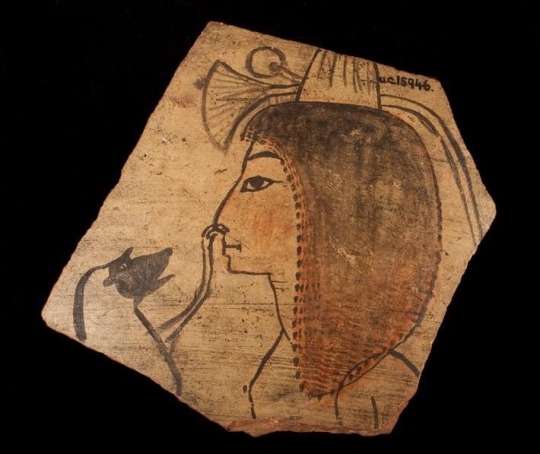
look !!!!!!! c. 12th century BCE potsherd.
(petrie museum of egyptian archaeology, UCL, UC15946)
#i found this on fb !!!! isn’t it sweet !!!#like wtf bro monkey picking ur nose !!?!!??!!#tagamemnon#i
298 notes
·
View notes
Text
A familiar stranger
Pairing: Marc Spector x reader platonic
Steve Grant x reader platonic
Summary: The reader meets Marc again after years but he acts strange
Word Count: 2130
Warnings: none I can think of
Prompt: “Are we still friends?”
A/N This is my third and last entry for @caplanbuckybarnes's foreverwriting challenge. This is set after the show that's why I had Steven work in a different museum.
A/N Special thanks to @girl-next-door-writes who inspired the reader's job with this great post with the cutect HC i have ever read. Gif is mine
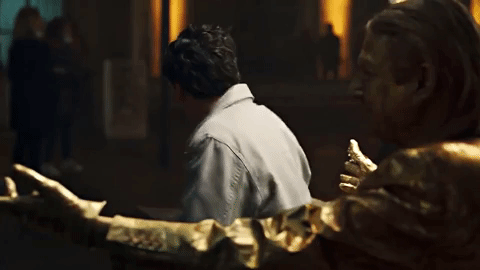
''Does everyone remember the rules we talked about yesterday?'' You heard your best friend Jessica who was also the teacher of the class ask the kids. She had spent the whole week previous to that day planning the field trip to the Petrie Museum of Egyptian archaeology. And being the teaching assistant you had made sure everything was set. You would accompany the class to the museum and hap planned some of the activities the kids would take part in during the field trip.
The school was within a walking distance from the museum so you pitched the idea of just walking there and not taking a bus. Jessica led the way and you walked behind the kids to make sure nobody will stay behind. Field trips were always fun for you and you loved them more now considering you could hear hilarious conversations among the kids. Some of them were wondering whether the things in the museum would be asleep or able to talk to them. Another kid had asked you to keep his lunchbox safe while you were in the museum so he wouldn't lose it. He pointed out that not only it was his favorite lunchbox but that his mom had put in his favorite sandwich as well. Reassuring him that his lunch would be safe in an empty museum was not the right thing to say. It triggered a million questions about why would the museum be empty. Gladly Jessica explained to the kids that the reason was for them to have as much fun as possible.
You made it there just five minutes before ten o'clock and you were immediately let inside. A polite elderly man approached you and introduced himself as Joseph, your tour guide. He led everyone to the lockers so you could put your things away for safekeeping and because food wasn't allowed in the museum.
''We won't eat our lunch here?'' The same kid from earlier asked you while close to whining.
''Not inside the museum. We have set some tables in our garden at the back for you to have lunch after the tour.'' Joseph explained and questioned if everyone was ready to begin the tour.
After half an hour of looking at the exhibits, you were led to the last part of the museum tour. Joseph quizzed the group on a few things and answered all the questions the kids had. One of the girls came to you for help with tying her shoelaces when you heard Joseph say something about one of his coworkers.
''I can ask Steven over there for verification on everything I just told you. He is brilliant and knows a lot about Egypt. Almost as much as I do. I am about to train him to become my replacement for when I want to work less.''
That's when all the kids turned to look at Steven. He noticed them and felt embarrassed about interrupting the tour. He didn't want to get reprimanded for leaving the gift shop to hear the tour. That's why he turned around to leave just as you finished helping the girl. That resulted in you only seeing the back of his head. However, you couldn't place the faint feeling of him being vaguely familiar. You were sure it would come to you on the off chance you would see him again. But the thing that didn't cross your mind was that the person you almost saw was one that you used to call your best friend some years ago.
After the tour, you and Jessica took the kids to the area in which the staff had provided you with activities. It was cute to see every child excited about drawing and playing games. They were given two drawing sheets, a true or false quiz, and an activity with Egyptian gods and goddesses. Everyone had fun during those and afterward, the kids got a little tired. So you and Jessica asked them if they wanted to do the scavenger hunt that was the last activity before lunch. Of course, they loved the idea and formed groups of three to look around the museum for the exhibition they were assigned to search. During the hunt, you took the chance to visit the gift shop in order to buy a souvenir for the classroom.
You looked around for a moment before a soft-spoken voice sounded behind you.
''Do you need assistance with anything?''
You turned to look at the person hoping he would help you choose something appropriate for a classroom. However, before you could muster a word you froze. You stared at the man in front of you with wide eyes and your mouth stayed open for a few seconds. You snapped out of your daze and whispered the first thing that came to your mind.
''Marc is it really you?''
Steven looked at you with narrow eyes and tilted his head. He had no idea who you were and how you apparently knew Marc. You took a step toward him and you noticed a slight change in his demeanor before he took off. You went after him but couldn't see where he went. Not wanting to leave Jessica alone with the kids any longer you purchased a small statue of Tawaret and returned to the class.
You ran into one of the groups of kids still looking around for the exhibit they had been assigned. It was a bronze statue of a cat sitting upright. The exhibit was near the stairs and since you remembered having seen it earlier you helped them finish the hunt. But you couldn't get Marc out of your mind and why he looked so confused when he saw you.
After all the activities were over, you all took your things out of the lockers and went to the garden to have your lunch before returning to school. There you spotted Joseph and approached him to thank him for the tour.
''I hope our kids didn't tire you too much.''
''Not at all. I enjoy it when people ask me questions. And kids always are so eager to learn new things. Their excitement made me happy to do this job, they were lovely.''
''Could I ask you something? When I was at the gift shop I saw someone I recognized. I think his name was Marc. Good looking guy around this height.'' You showed him Marc's height with your hand.
''We don't have anyone with that name working here. Although your description sounds like you're talking about Steven who works at the gift shop.''
''I must have been mistaken then. Thank you again and sorry to bother you.'' You went back to your class hoping Steven would still be at the gift shop when you were to return to the museum later so you could talk to him.
And that's exactly what you did after the field trip was over. You went back to the museum looking for Steven.
You were certain he was your friend and that he had changed his name after being discharged from the military. Your superiors hadn't offered any explanations for Marc's discharge but you only cared about what happened to him after that. Or if he had changed at all during those years.
You found him at the gift shop and approached him slowly hoping he wouldn't flee again.
''Excuse me, can I talk to you? Please Marc don't leave again. I just want to ask you one question considering you remember who I am. Are we still friends?''
He looked down and asked his supervisor if he could step away for a moment. She noticed the time and that they would close in twenty minutes. So she let him leave early to have a word with you.
You left the museum and took a seat on a bench on Gordon Square Part to talk.
''So apparently you are or were friends with Marc. I am not Marc, my name is Steven.''
''I'm (Y/N). I was in the marines with Marc. Are you two twins? I don't recall him mentioning anything about having a brother. And a British one at that.''
''We are not twins. How much information do you know about the reason Marc left the marines?''
''Nothing at all. The higher-ups told us nothing afterward. They shot down any questions we had about the subject. I was devastated about him leaving. You see he was my mentor. I quit almost a month after he left due to the pressure and not having him there to help and support me. I even looked for him after I left but it was like he disappeared.'' You started tearing up and Steven begged Marc to take his place to explain everything to you. Marc refused due to feeling guilty about what had happened to you.
''I am sorry (Y/N). The reason Marc was discharged what that he has DID. I am his other personality. And if it makes you feel a little bit better he feels awful you had to go through all of this because of him.''
''He can hear me?'' Steve nodded at you and you pointed out that you still wanted your earlier question about whether you were still friends answered. Also, you mentioned that you didn't want Marc to feel bad about what had happened to you since it wasn't his fault.
''He says yes if you want to. You seem like a nice person so I wouldn't mind getting to know you better as well.''
You smiled at him and then took moment to study Steven. His demeanor looked nothing like the way you remembered Marc. Marc was always more serious and not so open about his feelings. The person in front of you seemed more introverted than that, sweet and cute. You felt like he was someone you would like to know more about.
Steven noticed your silence and got worried about what he had said.
''I don't mean that in a creepy way. I just felt like we could talk about things. Maybe about how the kids liked the tour today. Or something else.''
''They loved it. And the statue I bought of Tawaret. The one you didn't help me pick since you ran away. She took her place on the desk to watch over the kids.'' Steven laughed a little at the comment since he was surprised Marc had run away from you.
''I am sure Layla would love t hear that.''
''Who's Layla, if I'm allowed to ask.''
''Right you don't know her. She is Marc's wife.''
''Marc is married?'' You raised your voice due to how surprised you were. When the two of you were in the marines Marc was adamant he would never get married and you were happily surprised to hear how much he had changed on the topic.
''Yes, he is. And Layla is great. I enjoy talking to her about Egypt since it's her home and she is also able to read hieroglyphics.''
''She sounds perfect. If Marc is ok with it I would love to meet her. And I am really happy I met you, Steven, I am sure we will become friends. I just hope Marc will decide to speak to me soon as well. We used to enjoy talking about our hobbies and I was trying to get back into drawing. Maybe I can convince one of you or maybe Layla to model for me in the future.''
Steven looked a little flustered at the thought so you decided to save him from the embarrassment.
''You don't have to say yes if you don't want to. I don't want to make you uncomfortable.''
''Thank you and I promise to tell Layla about you soon so we will arrange for you two to meet.''
''Sounds great. I just hope I'm not imposing on you. I only wanted to see Marc again. I have missed him for such a long time. But I get it if he doesn't want to. At least I got my answers about what happened to him.'' You checked your phone because you received a notification about an errand you had totally forgotten about. ''He wants you to be friends again. And I want that too. It will be good for him to have someone that knew him for as long as you have beside me. I will let you go to your appointment.''
You thanked him for his kind words and you exchanged numbers promising to contact each other soon.
You left feeling happy about not only finding Marc again but also meeting Steven.
Steven on the other hand stayed there a little more wondering if you would react that calmly to finding out about all the adventures they had been on.
#cappysforeverchallenge#marc spector x reader#steven grant x reader#marvel fic#moon knight fic#my writing
53 notes
·
View notes
Text
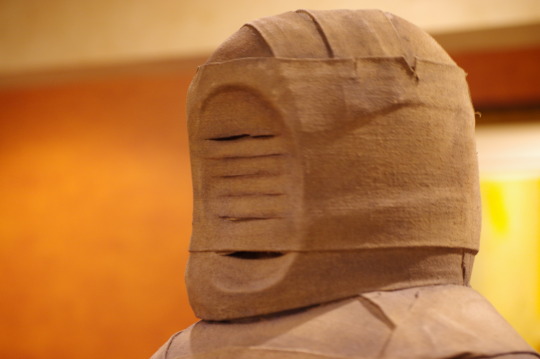
Doctor Who: Pyramids of Mars
I rewatched this serial on 6 March 2023. I think the last time I watched this tale it was at the Petrie Museum, in UCL. A marvellous location for it since it opens at a 1911 English archaeological dig in Egypt. The Egyptian/Gothic horror motifs are what make this tale a firm favourite of mine.
We join our heroes in the TARDIS. Sarah is wearing a frock that the Doctor claims Victoria wore; this is one of the first times we have the Doctor harking back to a travelling companion his present travelling companion didn’t know. He’s in a melancholy and rebellious mood, which later turns to doom mongering. Then they land in the Old Priory that later becomes UNIT HQ where strange things with an ancient Egyptian flavour are afoot.
There is so much to enjoy about this adventure. The mummy-robots, Sutekh’s penchant for the dead, the love of a brother refusing to believe his sibling is dead, and the mix of new and old/human and alien technology and ideas. I am a Stargate fan and it’s fun to see the similarities between this 1975 serial and what emerged in the 1990s. We also get to see a time paradox, which is oddly rare in Doctor Who.
Fun facts: Sarah is adamant in this serial that she’s from 1980. She’s also a crack shot.
6 notes
·
View notes
Text
Why Herodotus is an important ally in the fight against pseudoarchaeology and more particularly pseudoegyptology
The user @ancientstuff made a post which refers and gives a link to a good article of archaeologist David Wengrow, who debunks the pseudoarchaeology of Graham Hancock, but also shows its roots in the ‘scientific” racism of major British Egyptologist Flinders Petrie (https://at.tumblr.com/ancientstuff/apocalypse-no-pseudo-archaeology-ancient/fk5qy8bo09n2 ). The propagation and influence of pseudoscience and more particularly pseudoarchaeology are dangerous, not only because such things are intellectually regressive, combining to the one or other degree fallacious reasoning, unhinged imagination, and fraud, but also because usually pseudoscientific and pseudoarchaeological theories are not ideological and political neutral: in fact they usually pursue right wing or even far right agendas.
Anyway, I reproduce here (with some modifications) some paragraphs of an older post of mine (https://aboutanancientenquiry.tumblr.com/post/653271323541438464/on-herodotus-and-egypt-ix-some-final-thoughts ), in which I explain why I believe that Herodotus is an important ally in the fight against pseudoarchaeology and more particularly pseudoegyptology (theories of an “Aryan” origin of the Egyptian civilization, ’pyramidology”, attribution of the pyramids to some mysterious “lost civilization” or even to “aliens” etc):
The first fundamental misconception about ancient Egypt has to do with racism and more particularly “scientific” racism. And I will explain what I mean.
For many Westerners in the 19th century and in a large part of the 20th century the fact that a non-European, non-Nordic people like the Egyptians had created such a great civilization was something inconceivable. For these people the Egyptian civilization “should” have a somehow “Aryan” origin. Therefore, theories about such an origin of the Egyptian civilization were proposed and were for a long time very influential.
The main proponent of such theories was the distinguished British Egyptologist William Matthew Flinders Petrie (1853-1942), about whom we can read in Wikipedia (https://en.wikipedia.org/wiki/Flinders_Petrie ) :
“Petrie remains controversial for his anti-democratic and pro-eugenics racial views, and was a dedicated believer in the superiority of the Northern peoples over the Latinate and Southern peoples.[26] These views spilled over into his academic opinions. Believing that society is the product of racial biology,[27] he contended that the culture of Ancient Egypt was derived from an invading Caucasoid “Dynastic Race”, which had entered Egypt from the south in late predynastic times, conquered the “inferior, exhausted mulatto” natives, and slowly introduced the higher Dynastic civilisation as it interbred with them.[26][28] Petrie engaged in fierce controversies with the British Museum’s Egyptology expert E. A. Wallis Budge, who contended that the religion of the Egyptians was not introduced by invaders, but was essentially identical to that of the people of northeastern and central Africa; however, most of their colleagues judged Petrie’s opinion to be more “scientific”. “
It is clear from this excerpt that, contrary to what some people suggest on this site, racist views about ancient Egypt were not the result of the hegemony of the Classics over Egyptology: Petrie was not Classicist, on the contrary he was the most distinguished Egyptologist of his time, and his views were informed by racial biologism, not by the influence of the Classics. Moreover, these racist views had nothing to do with some “worship of the Greeks”, again contrary to what some people on this site believe, as Petrie was a Nordic supremacist who had no reason to “worship’ a Southern European people like the Greeks.
Petrie’s views were for a long time very influential among Egyptologists and Barry Kemp writes in a rather ambiguous way:
“Might not the evidence show that the Egyptians, as Caucasoids, ultimately came from the eastern Mediterranean and Middle East? Discussions took this course even into the 1950′s, most notably on the theme that the development of Egyptian civilization was given a vigorous push by the immigration around the beginning of the 1st Dynasty of a forceful and intelligent people from the east, the “dynastic race”, who came to dominate the existing population of predominantly Negroid type. Today these are troubled waters which most people who write about ancient Egypt from within the mainstream of scholarship avoid.”
(B. Kemp “Egypt-Anatomy of a Civilization”, Routledge, second edition, 2007, p. 47)
Today the “scientific” racist approach on Egypt of Petrie and his followers has no advocates among scholars, as there is no serious evidence for the alleged existence, invasion, and more general role of the “dynastic race” in the formation of the Egyptian civilization, and the emergence of the latter is very well explained in terms of an indigenous development. But the racist explanation of the ancient Egyptian civilization as the result of the domination of a Caucasian elite over the indigenous population is still popular in different miilieus of far-righters, as one can easily find on the net, and one could not exclude that in the future it could reach again a broader public.
But I remind here that Herodotus, the first author who gave in the Book II of his Histories a comprehensive account of the ancient Egyptian civilization as he encountered it in Late Period Egypt, is an ally in the fight against such unscientific racist views on ancient Egypt. And this because in his work there is no mention of any tradition about some “dynastic race”, which would have invaded Egypt, submitted the indigenous population, and created the Egyptian civilization. Given that Herodotus often collected traditions about migrations of peoples, the absence in “Histories” of any mention of traditions about some “foundational” invasion and conquest of Egypt means that no such tradition existed in his time. This thing in turn suggests that the invasion of the Caucasoid “dynastic race” never happened, as such a momentous event should have left some traces in the Egyptian tradition, which would have been recorded in the one or the other form by Herodotus. On the contrary, Herodotus insists on the indigenous character and the antiquity of the Egyptian civilization, as well as on the influence exerted by this civilization on other peoples (among them the Greeks), according to his views of ‘cultural diffusionism”.
Not of course that the rejection of the theory of the “dynastic race” as the true creator of the Egyptian civilization depends only on Herodotus’ account, because (as I said before) there is no evidence supporting this theory, on the contrary the evidence shows that the development of the Egyptian civilization was indigenous. But Herodotus’ research and testimony have their value and, moreover, they show how ridiculous are the “scientific racists”, who are led by their ideological obsessions to speculations about invasions and “master races” which would be necessary to explain the development of the ancient Egyptian civilization, whereas the indigenous character of this development was obvious and beyond doubt for an ancient researcher like Herodotus.
I remind here that, although Herodotus distinguishes the Egyptians from the “Ethiopians’ (which was the term generally used by the Greeks for Black African people), he describes the Egyptians as typically “black-skinned and woolly-haired”, as the “Landmark Herodotus” edition of “Histories” translates the original μελάγχροες εἰσί καί οὐλότριχες of 2.104,2. For him it was obvious that the rulers, architects, craftsmen, and workforce who had built the pyramids belonged to this “black-skinned” people. On the contrary, it is impossible for “scientific racists” to swallow the fact that the ruling elite which planned and directed the building of the pyramids was not “Nordic”, but “black-skinned”...
But perhaps the major source of misconceptions on ancient Egypt today is found in the different theories of “pyramidology” (https://en.wikipedia.org/wiki/Pyramidology#Water_shaft_theory ) and more particularly in the popular theory that the pyramids were built not by the ancient Egyptians, but by some kind of mysterious “lost civilization” or even by…Aliens. These theories have of course again some relation with racism, as it seems that they stem from the implicit assumption that a “non-White” people like the ancient Egyptians would not have been able to build such marvels and that some other, more “exotic” explanation must exist for the construction of the pyramids.
Once again, such theories are refuted by what Herodotus has written on Egypt. Herodotus’ account of the building of the pyramids, the only surviving ancient account of this paramount achievement of the ancient Egyptians, is not flawless, something natural, as he wrote about two millenia after the construction of the Great Pyramid. But this account has the great merit that it is totally rational. For him the building of the pyramids is not a mystery, but a feat of engineering and hard work, of course attributed without any doubt to the Egyptian civilization. Now, if a person of Antiquity like Herodotus could explain the building of the pyramids as a feat of the Egyptians, without recourse to the mythological, the supernatural, or the extraterrestral, the people who believe today that it is necessary to involve mysterious ”lost civilizations”, miraculous techniques of “acoustic levitation”, or even... Aliens to explain this building appear totally ridiculous. And Herodous’ rational, although very unflattering for Cheops and his regime account of the motives and means -authoritarianism and forced work- used for the construction of the pyramids and of the Egyptian popular tradition about it are important arguments against different other “mystical” theories around the pyramids. Therefore, Herodotus is once again an ally, this time against the various fashionable unscientific or even crazy theories of “pyramidology”.
4 notes
·
View notes
Text
As I reading "The Snake, The Crocodile and The Dog", another Amelia Peabody mystery, I feel I should point out that there are several people mentioned in the story who were very real and important in the field of archaeology.
Gaston Maspero (M. Maspero)- he was a leading Egyptologist, who specialised in Egyptian language. In November 1880 Maspero went to Egypt as head of an archeological mission sent there by the French government, which ultimately developed into the well-equipped Institut Français D'archéologie Orientale. Upon the death of Egyptologist Auguste Mariette in 1881, M. Maspero took on the role as director-general of excavations and of the antiquities of Egypt. In 1882, he discovered the tomb of Amenemhet I.
Emerson's "rival", Petrie, was actually a very important person in the field of Egyptology. Flinders Petrie was a British Egyptologist and Archaelogist, whose contributions greatly influenced both fields, and their establishment as scientific disciplines. Petrie is best known for creating a system of relative dating using pottery styles called "seration".
Also mentioned, briefly, was the "square-jawed, clean-shaven American named Reisner". They are referring to George Reisner. He was an Egyptologist and Archaeologist as well as the director of the Harvard-Museum of Fine Arts, Boston expedition. His work was extensive and he made contributions to the fields of Egyptology and Archaeology. He dedicated his life to bringing the beauty of Ancient Egypt to life. He kept meticulous records of every object found. His work still lives on throughout the world through his documentation, which has allowed the findings in Egypt to be disseminated throughout the world.
Also mentioned in the book, however briefly, is a chap named Lepsius: “Especially in view of the fact that Lepsius mentions seeing such tombs in 1843.”
Lepsius is Karl Richard Lepsius, a German Egyptologist whose many contributions helped establish the scientific field of Egyptology. Lepsius led the Prussian Expedition to Egypt and Nubia (Syria) between 1842-1845. The main outcome of this expedition was "Denkmäler aus Ägypten und Äthiopien" (a collection of plans, maps, and drawings of Ancient Egyptian tomb and temple walls). This was Lepsius's greatest legacy. He had also been a Professor of Egyptology at Berlin University and a co-director of the Egyptian Museum in Berlin.

#elizabeth peters#amelia peabody#Amelia Peabody Mysteries#historical fiction#books#reading amelia#currently reading#egyptian themed mysteries#egyptologists#archæology#Karl Richard Lepsius#George Reisner#Gaston Maspero#Flinders Petrie#archaeology mysteries#famous Egyptologists#Harvard-MFA#mystery books#Emerson and Peabody#The Snake The Crocodile and The Dog#Barbara Mertz#Egyptology
2 notes
·
View notes
Text
🇬🇧✨ Exploring London: 100 Must-See Sights ✨🇬🇧
Looking to uncover the magic of London? 🌟 Whether you're a first-time visitor or a seasoned explorer, the city is brimming with iconic landmarks, hidden gems, and cultural treasures waiting to be discovered. Here's a comprehensive list of 100 must-see sights to add to your London itinerary:
Big Ben and the Houses of Parliament
The Tower of London
Buckingham Palace and the Changing of the Guard
The British Museum
The London Eye
The Shard
St. Paul's Cathedral
The Tate Modern
The National Gallery
The West End Theatre District
Tower Bridge
The Victoria and Albert Museum
The Natural History Museum
The Science Museum
Covent Garden
Trafalgar Square
The Royal Albert Hall
The Globe Theatre
The Royal Opera House
The Emirates Stadium (Arsenal)
The Royal Observatory Greenwich
The Cutty Sark
The National Maritime Museum
The Royal Botanic Gardens, Kew
The London Zoo
The Regent's Park and Primrose Hill
The Royal Academy of Arts
The Barbican Centre
The National Portrait Gallery
The Museum of London
The London Transport Museum
The Sherlock Holmes Museum
The Tate Britain
The Somerset House
The Sky Garden
The Churchill War Rooms
The Kensington Palace
The London Dungeon
The Shard Viewing Gallery
The Camden Market
The Brick Lane Market
The Borough Market
The Greenwich Market
The Portobello Road Market
The Columbia Road Flower Market
The King's Road
The Hampstead Heath
The Royal Courts of Justice
The Whitechapel Gallery
The Serpentine Galleries
The Saatchi Gallery
The Electric Cinema
The O2 Arena
The Leadenhall Market
The St. James's Park
The Queen Elizabeth Olympic Park
The Grant Museum of Zoology
The Hunterian Museum
The London Mithraeum
The Royal Festival Hall
The Southbank Centre
The Museum of London Docklands
The Design Museum
The Victoria Miro Gallery
The Bank of England Museum
The Cartoon Museum
The Benjamin Franklin House
The Imperial War Museum
The Foundling Museum
The Geffrye Museum
The Horniman Museum and Gardens
The Old Operating Theatre Museum
The Royal Observatory, Greenwich
The Royal Air Force Museum
The Royal Institution
The Freud Museum
The Wellcome Collection
The Pollock's Toy Museum
The Royal Hospital Chelsea
The Fan Museum
The Estorick Collection of Modern Italian Art
The Guildhall Art Gallery
The Dennis Severs' House
The Florence Nightingale Museum
The Cartoon Museum
The Courtauld Gallery
The Cinema Museum
The Museum of Brands, Packaging, and Advertising
The William Morris Gallery
The Sir John Soane's Museum
The Grant Museum of Zoology
The Hunterian Museum
The London Fire Brigade Museum
The Charles Dickens Museum
The Dr. Johnson's House
The London Film Museum
The Museum of the Order of St John
The Petrie Museum of Egyptian Archaeology
The Ragged School Museum
The Royal London Hospital Museum
With this extensive list, your London adventure promises to be an unforgettable journey through history, culture, and art. Happy exploring, Tumblr travelers! 🏰🎨🌟
1 note
·
View note
Text
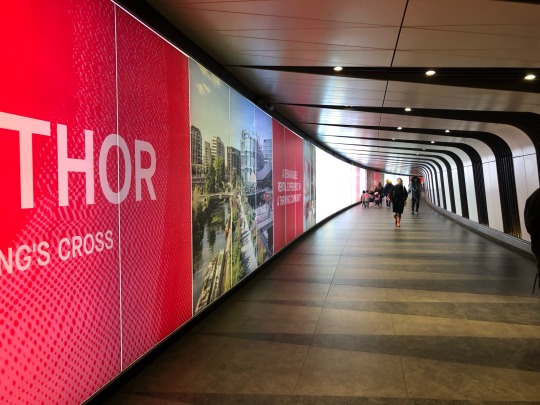
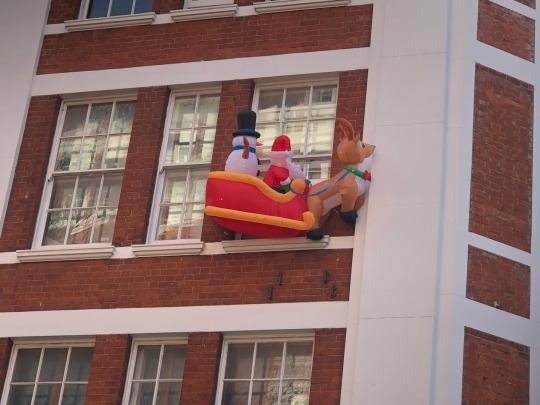

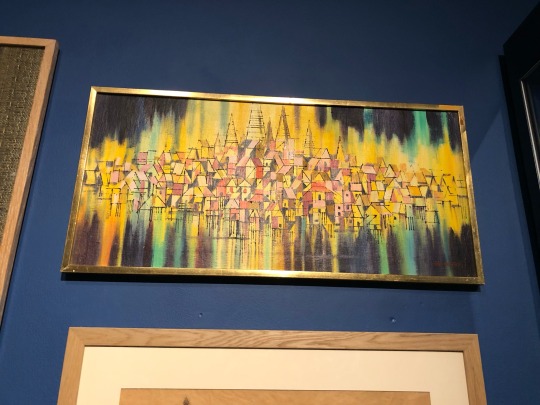

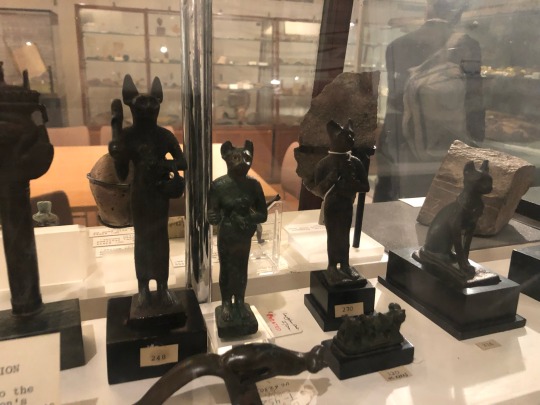
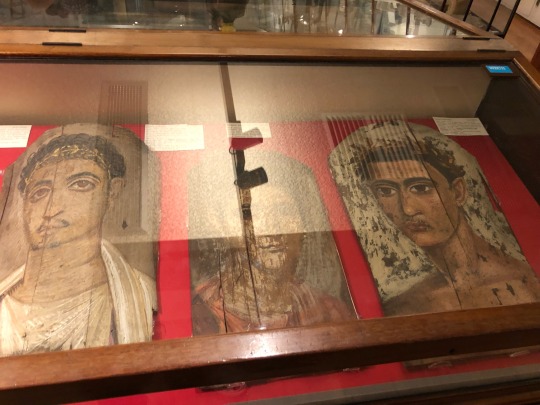
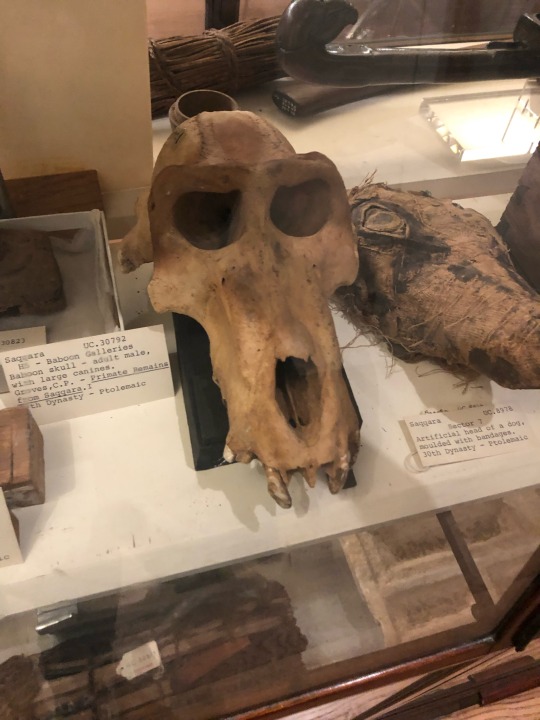

29/11 CSM, Kings Cross and museum/exhibition visits. Had the pleasure of going on a guided tour of the Kings Cross area led by Jamie She, where we explored UAL’s Central Saint Martins school, SOAS’ Brunei Gallery and UCL’s Petrie Museum of Egyptian Archaeology. Had great fun exploring hidden nooks and crannies surrounding CSM, particularly at UCL’s Petrie Museum: the ancient Egyptian feline statues on display were great inspiration for me to explore a darker story for my Body and Experience outcome, which is why I stopped to complete some life drawing of said statues. However, I wish that I completed some more life drawing, particularly at the Brunei Gallery: each piece exhibited told an intricate story, stories that I could have taken great inspiration from to build my own artistic storytelling skills.
0 notes
Text
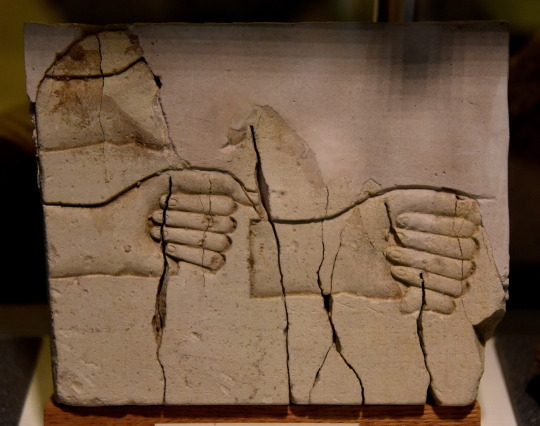
Ancient Egyptian limestone trial piece depicting hands. Artist unknown; reign of Akhenaten (ca. 1353-1336 BCE), 18th Dynasty, New Kingdom. From Amarna; now in the Petrie Museum of Egyptian Archaeology, University College London. Photo credit: Osama Shukir Muhammed Amin FRCP/Wikimedia Commons.
#art#art history#ancient art#Egypt#Ancient Egypt#Egyptian art#Ancient Egyptian art#18th Dynasty#New Kingdom#Amarna Period#sculpture#relief sculpture#limestone#stonework#carving#Petrie Museum of Egyptian Archaeology
113 notes
·
View notes
Photo

The Petrie Museum
For those who like Egyptology collections, but severely dislike the idea of the chaos that is the packed rooms of the British Museum (seriously tourists, how many photos of the Rosetta Stone do you need?), a visit to the Petrie Museum may be in order.

The museum began life in 1892 as a teaching resource of its namesake, William Flinders Petrie, the first professor of Egyptian Archaeology and Philology. The earliest part of the collection came from the bequest of the writer Amelia Edwards, though it was soon expanded with finds from Petrie’s excavations. Today it is regarded as one of the leading collections of Ancient Egyptian and Sudanese artefacts.
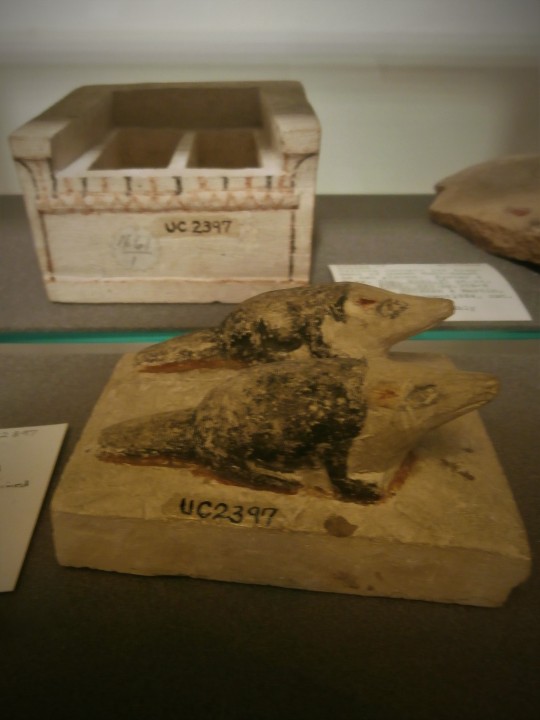
Unlike the British Museum’s colossal statues and numerous mummies, the Petrie Museum focusses more on domestic items, such as jewellery, pottery, combs, makeup palettes, and clothing, spanning from pre-dynastic Egypt to the Roman period.
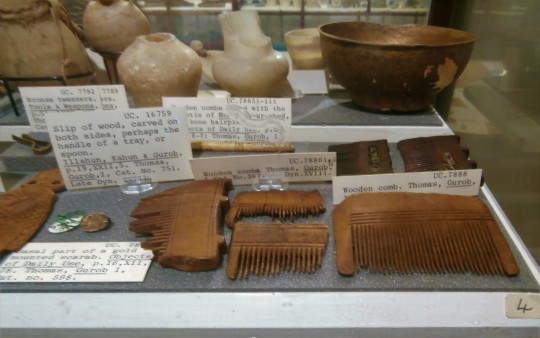
Amongst these are some real treasures, such as the oldest surviving dress, a coffin for a scarab beetle, and a winged phallus. Speaking of which, one of the larger pieces in the museum is a relief of the fertility god Min, who is always portrayed with a huge, erect penis. In the early days of the museum, a label was apparently used to cover that certain part of Min’s depiction so as not to offend the visitors.
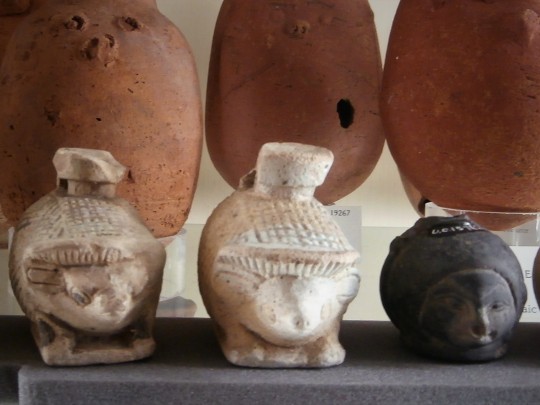
#london#uk#england#museum#egyptology#ancient egypt#petrie#flinders petrie#archaeology#collection#excavation#egyptian#sudanese#jewellery#makeup#combs#clothes#roman#scarab#pottery#min#history#travel#tourism#lundene#londinium
70 notes
·
View notes
Photo
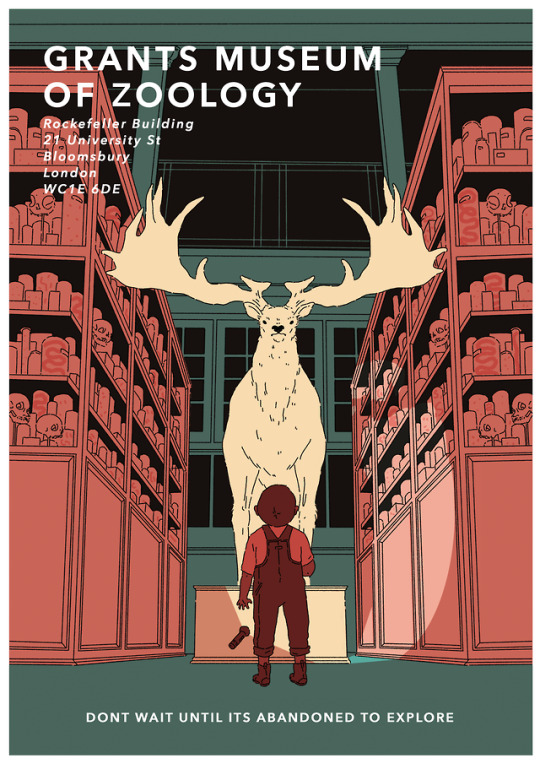
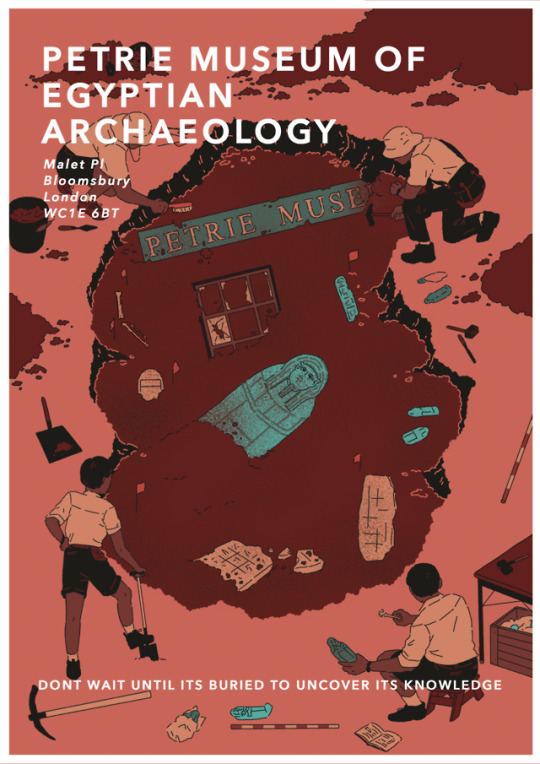

project about advertising for museums with risk of closure
#grants museum of zoology#petrie museum of egyptian archaeology#sir john soanes museum#illustration#digital
1 note
·
View note
Photo

Painted limestone miniature stela. It shows Akhenaten standing before 2 incense stands, Aten disc above. From Amarna, Egypt. 18th Dynasty. The Petrie Museum of Egyptian Archaeology, London .
#Stele#Stela#Akhenaten#Aten#Amarna#Egypt#Ancient Egypt#archeology#ancient history#anthropology#egyptology
113 notes
·
View notes
Photo
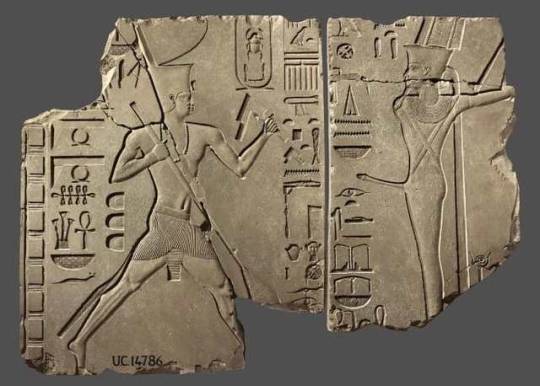
Lintel of Senusret I Running Toward the God Min This relief was originally part of the left side of a massive door lintel that depicted the king Senusret I (left) performing a running ritual in front of the fertility god Min (right). Running rituals are generally connected with the Sed festival, a renewal rite that the king ideally celebrated after thirty years on the throne. The vertical inscription in front of Min includes the promise that the deity will grant the king such a milestone. The king carries an oar and an angled nautical object, which can be associated with the Sed festival; behind him are three semicircular objects representing the symbolic markers between which he runs. The inscription in front of him reads: “Taking the oar to Min, the great one who is in the midst of his city”. The piece is notable for its beautiful modeling and extremely fine detail, characteristics of the best 12th Dynasty relief work. Middle Kingdom, 12th Dynasty, reign of Senusret I, ca. 1971-1926 BC. Limestone, from Coptos, reused in the foundations of the Ptolemaic temple; Flinders Petrie excavations. Now in the Petrie Museum of Egyptian Archaeology. UC 14786 #egyptology_misr #Egypte #Agypten #Egipt #Egipto #Egitto #Египет #مصر #मिस्र #エジプト #埃及 #Egypten #Visit_Egypt #discover_Egypt #Experience_Egypt #diving #socialmedia #egypt #iloveegypt #luxor #karnak #mylifesamovie #mylifesatravelmovie #travelblog #travelblogger #solotravel #wanderlust #gopro #egyptology #ancientegypt (at Petrie Museum of Egyptian Archaeology) https://www.instagram.com/p/B2Q9Qb7FHVu/?igshid=5i3e3m2kro6v
#egyptology_misr#egypte#agypten#egipt#egipto#egitto#египет#مصر#म#エジプト#埃及#egypten#visit_egypt#discover_egypt#experience_egypt#diving#socialmedia#egypt#iloveegypt#luxor#karnak#mylifesamovie#mylifesatravelmovie#travelblog#travelblogger#solotravel#wanderlust#gopro#egyptology#ancientegypt
24 notes
·
View notes